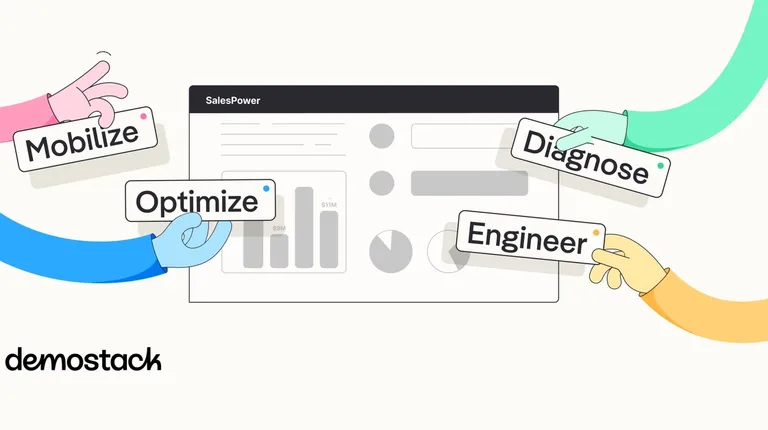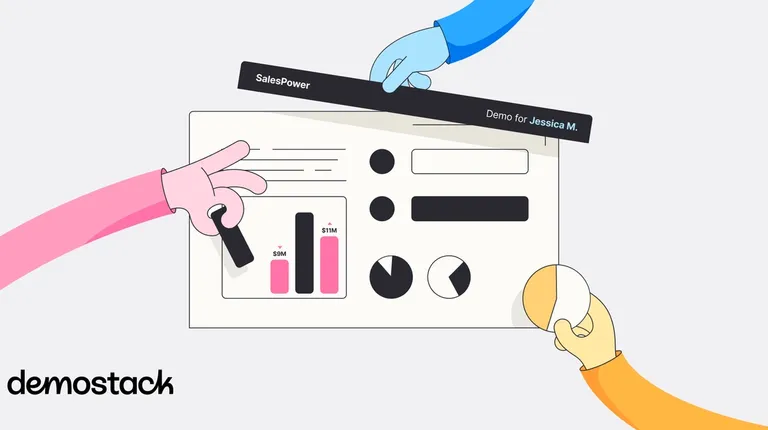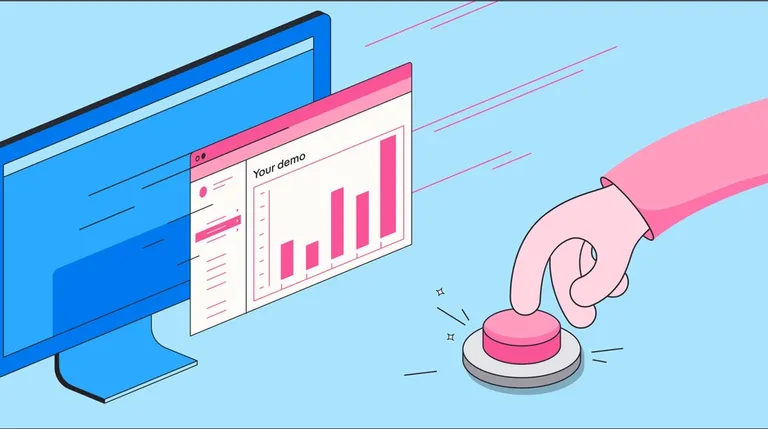You hire a sales rep. You’re both ready to go and get logos through the door. But then you hit a roadblock. The ramp time is slower than it should be—and if you don’t do something about it, you’ll keep losing out on revenue.
For most SaaS companies, getting new sellers fully ramped is a long game.
The excuses are predictable:“Our product is too complex.”“It just takes time to learn how the product works.”“We let SEs handle the demo.”
But let’s be real: if it takes more than 6 months for a seller to confidently show your product, explain how it solves real problems, and tailor the story to different buyers—something is broken. And that’s not ramp. That’s runway. And it’s burning fast.
The real gap here isn’t knowledge. It’s not motivation. It’s product fluency. If your sellers still don’t have it 6 months into the job, the problem most likely isn’t them. It’s how you’re enabling them..
It’s time to rethink how you onboard, train, and certify new reps.
What’s Really Slowing Sellers Down
Your reps might know the pitch. They’ve seen the decks. They’ve even sat in on live demos. But when it’s time for them to explain how the product actually works, they turn right to the SE. And to be fair, that’s often what the SE expects – for the AE to be the intro to the call.
Here’s why:
1. They don’t get hands-on. Watching demos doesn’t build fluency. If reps don’t have a safe, guided environment to explore the product on their own, they’ll never internalize how it works—or how to talk about it. Without space to play, break things, and practice, learning stays surface-level.
2. Enablement stays surface-level. Sales training often covers messaging and value props—but skips over how the product delivers that value. And when enablement lacks the tools to go deeper, reps are left guessing what buttons to push or what stories to tell.
3. They learn to rely on someone else. If every interaction with the product requires an SE, a sandbox request, or an engineer’s help, reps never build confidence—or trust with the prospective buyer. That’s not enablement. That’s a handoff. And it reinforces a culture of “someone else will show it.”
4. The product environment isn’t built for learning. Reps might get access to the product, but most environments aren’t designed to teach. They’re cluttered, unstructured, and way too complicated to show what the product can do. Without a clear path to explore key workflows, reps end up guessing instead of learning.
The Crawl–Walk–Run Approach to Product Fluency
The fastest-ramping sales teams don’t just hand reps a pitch deck and hope for the best. They take a structured, hands-on approach to product enablement. When you break product enablement down to three stages, Crawl–Walk–Run, reps learn faster when they can explore, practice, and apply what they’re learning in the product itself.
Crawl: Introduce the story
Early on, reps need a way to understand the product’s purpose, the personas it serves, and the value behind each key feature—without dwelling on login screens and home dashboards. The goal at this stage is orientation, not depth.
This is where interactive product tours or guided demos are very useful. They walk reps through specific workflows (like onboarding a user or completing a task) in a linear, controlled path—no clicking around required. Combined with narrated demo videos or walkthroughs from top sellers, they give new reps the context they need to start connecting the dots.
Walk: Learn by doing
Once reps know the what and the why, they need to get their hands on the how. But instead of dumping them into a cluttered environment that may lack the latest features, the best teams give them access to sandboxed demo environments—safe, pre-sequenced versions of the product designed for learning.
This is where product fluency starts to take root. Reps explore key flows at their own pace. They practice showing features, click through common user paths, and rehearse talking points without fear of breaking something—or going off-script.
Run: Apply and certify
With product context and hands-on experience under their belt, reps are ready to apply what they’ve learned. Here, the demo environment shifts from a practice tool to a proving ground. You’re not looking for perfection—you’re building confidence and repeatability.
This might look like:
- Recording a sample demo using a sandbox
- Personalizing a use-case walkthrough with dummy data
- Walking through a realistic product scenario in a mock call
- Getting certified on core flows
Case Study: How Motive Turned Demo Enablement on Its Head
Most of Motive’s sellers couldn’t confidently demo the product on their own. They leaned heavily on SEs, spent hours prepping examples, and lacked a consistent, repeatable way to tell the product story. To fix that, Motive rebuilt demo enablement from the ground up.
First, they created a safe, standalone demo environment that replicated their live platform—no PII, no backend issues, and no surprises. Reps could explore workflows, rehearse talk tracks, and build confidence without needing engineering support or hours of prep.
Next, they rolled out a Crawl–Walk–Run certification track. Every new seller completed a progression of guided tours, sandbox walkthroughs, and personalized demo recordings—all within their first 30 days.
And to keep it engaging? They introduced a “Beat the Boss” challenge, where reps competed in a March Madness-style bracket to deliver the best demo—including a showdown with their CEO.
The impact:
- +15% lift in trial conversions
- +10% improvement in win rates
- A team of sellers who could confidently show product—without waiting on SEs
“To be honest, when this was first assigned, I was a bit apprehensive. But the preparation really helped me gain a much deeper understanding of the product. It also gave me valuable insights on how to pitch the product more effectively and smoothly—and helped me get more familiar with the demo click path.”— Enterprise AE at Motive

Final Takeaway: Software Product Demos Aren’t Just for Buyers
Most teams treat demos only as sales tools. But the best teams also use them for something very powerful: training.
Product tours, sandboxes, and demo environments aren’t just for live calls—they’re how you teach reps what the product actually does, how it solves problems, and how to tell that story with confidence.
Because if your sellers can’t explore the product safely, practice the narrative, and build fluency on their own… they’re not enabled. They’re just waiting for someone else to show it.






